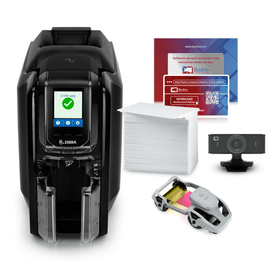You might have seen many people waving a card in front of a door reader to get access to an area inside a building. These cards are proximity cards and make use of radio frequency ID (RFID) to communicate. RFID is a wireless technology that allows communication with an access control server that decides whether or not to allow entry to the area.
Business organizations can have the following benefits by providing proximity cards to their employees.
Security
Managing and monitoring physical access to the internal departments, thereby protecting your organization.
Attendance
Data from the proximity cards let you keep track of the people inside the building and the time at which they arrived at the place.
Reporting
The door access data collected from the card can be used in automated audits or reports and also offer details on who entered a particular area and at what time.
Customization
Proximity cards can be easily personalized and branded to meet the specific requirements of your business.
How do Proximity Cards Work?
The technology behind a proximity card includes an electronic read-only microchip and an antenna. The electronic chip is a piece of semiconductor material with an IC integrated into it and the antenna is a metallic coil that allows the card to communicate with the door reader. As these cards only need close contact with an RF antenna to be read, they are also called contactless cards. The range of operation of these cards can vary depending on the type of card reader used.
Printing On Proximity Cards
It is important to take into account the methods of printing while printing on door access or proximity cards. Proximity cards are of two types, directly printable and clamshell. Clamshell cards are thicker cards and were used popularly before photo ID cards became the norm. ID card printers can be used to print on the directly printable proximity cards and only this type of proximity card can be directly printed on. However, users may also need to print on clamshell cards. In such a scenario, it is recommended to use adhesive plastic ID cards that can be manually applied to the clamshell proximity card.
If you want to print on an adhesive card and then apply it manually on the clamshell card, then you should make use of direct-to-card ID printers to ensure that the adhesive material of the card is not melted.
Browse our full selection of ID card printers here: Bodno ID Card Printers
Want to see only the best? See our most popular printers here: Bodno Best Sellers

















